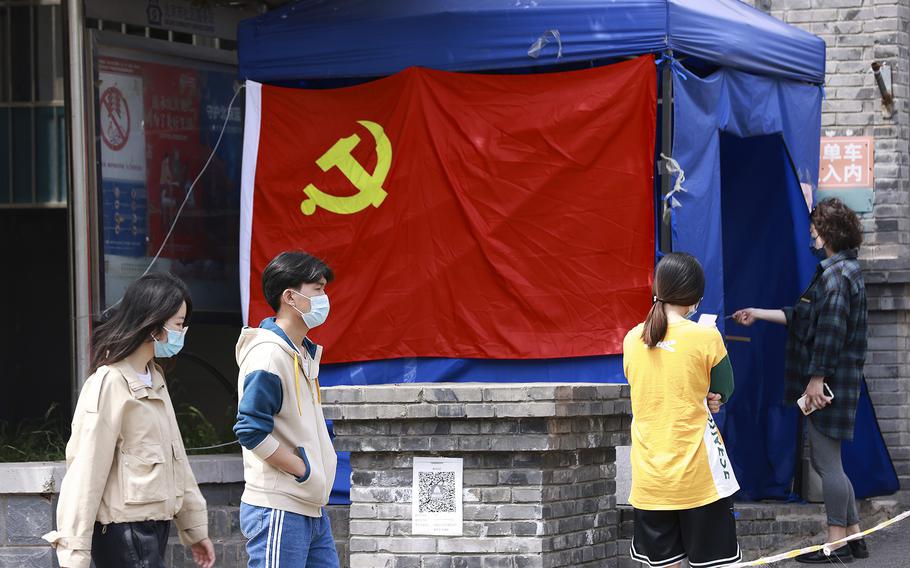
People wait in line for a swab test at a COVID-19 test site on May 19, 2022, in Beijing as China is trying to contain a spike in coronavirus cases in the capital. (Lintao Zhang/Getty Images/TNS)
Stars and Stripes is making stories on the coronavirus pandemic available free of charge. See more stories here. Sign up for our daily coronavirus newsletter here. Please support our journalism with a subscription.
(Tribune News Service) — Michael Mina has long pushed for widespread testing as a way to stop COVID-19 outbreaks in their tracks. But what China is doing, he says, is going too far.
Wedded to a pandemic strategy that still seeks to eliminate every coronavirus case, the world’s most populous country is rolling out a vast network of testing booths in urban areas so that millions of people are within a 15-minute walk of getting swabbed at all times. Cities like Beijing, Shanghai, Shenzhen and Hangzhou are requiring tests as often as every 48 hours to access public transit, entertainment venues — and even workplaces.
While Mina, a former Harvard epidemiologist, was an early proponent of using inexpensive at-home tests to screen populations for initial cases of COVID before they spread, he says China is taking the concept to another level. Entire cities and towns are covered by mass-testing mandates that require laboratory analysis, with results sent to health tracking apps on a person’s smartphone.
The approach could temporarily wipe out the virus within China — the authorities’ aim — yet leave the country even more vulnerable to it, Mina said.
“Watching what I have advocated for go too far, it really does demonstrate that sometimes these ideas can actually do damage,” said Mina, who is now the chief science officer at eMed, a company that offers at-home COVID tests and telemedicine services. “China taking this approach certainly makes me think twice about the approaches that I’ve advocated widely for.”
Mina says he questions the health implications of such widespread screening, and notes the economic costs. More than two years after the arrival of COVID, it’s clear the virus is here to stay. By keeping people completely cut off from the pathogen, China may make them more vulnerable once they are exposed, he said.
“This policy puts China in a really dangerous position,” he said. “It’s essentially dry kindling, ready to ignite anytime there’s cases. Locking down and testing is going to lead you nowhere except to suppress the virus. This is going to go on in perpetuity until there’s until there’s some endemicity.”
There are benefits, with a permanent testing infrastructure meaning China will be able to fight future COVID flare-ups and other threats like monkeypox. It’s something the U.S. doesn’t have, and will put China in a good position to deal with emerging pathogens.
But once a virus becomes established like COVID, everyone will be exposed to it eventually, Mina said. Interfering with the process, rather than preparing for it, can be harmful.
“It’s not just delaying the inevitable,” he said. “It’s also potentially tipping over into a realm where the consequences of this type of activity are damaging, not just from a COVID perspective, but really from the way humans have evolved to be exposed to other infections on a frequent basis.”
___
©2022 Bloomberg L.P.
Visit bloomberg.com.
Distributed by Tribune Content Agency, LLC.